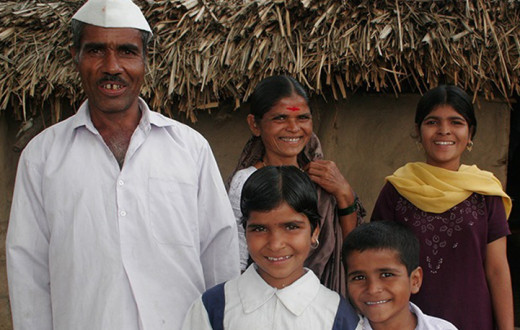There is this feeling; a fine mix of fear, excitement and curiosity, more like a light shiver through the toes. That’s what I felt when I got a phone call and was told that I would be going on a journey to Patamda, a naxal inflicted tribal district in the interiors of Jharkhand. I reached Jamshedpur, and after a quick stop for dinner at Mohan da’s house we left for Patamda, a one and half hour drive off the town and through the woods. Night had set in, and we set out with that same feeling lingering in and around me, this time a bit more defined.
There was a rainstorm the previous day, the first of the season. Trees uprooted, broken billboard signs, ripped up high tension electricity wires and wet mucky earth, “nature at its wildest,” I thought, as we drove down the isolated road. “We won’t take the shortcut through the heart of the jungle,” said Mohan da with a nonchalant undertone, “high chances of fallen trees, and there are wild elephants that patrol the jungle, not the kind of creatures we would want to encounter at this time of the night.” We forewent the shortcut and took the better road, but the longer one. There was not a single vehicle on the road, “sirf Guru ki gaadi chal rahi hai (only the Master’s vehicle is running)” Mohan da smiled, as he told me how during his visit in 2009, Guruji, had taken the same route, only with an entourage of 50 cars and a unending chain of CRPF men guarding the route (which Guruji found quite unnecessary).
After a crossing of few villages and a 10 km diversion cutting through it we reached the ashram, right at the end of the village called Bongai. A beautiful piece of land still under construction, the very first feeling the mind absorbs is ‘organic’, the earthy smell of manure and mud only justifies it. Papaya, mango and jamun (a species of plum) trees welcomed my stroll into the ashram. The ashram, surrounded by vast expanses of land some barren and some green, overlooked by silhouettes of mountains has a story.
Long long time ago, about a hundred years or so, some tribals found a Shiva Linga dug up in the earth. They worshiped Lord Shiva and did a puja at that place. As the years went by the celebration increased in its enormity, and there used to be a mela (fair) every year, for hundred years. Besides the mela, the land was untouched with no construction done on it for many years. It would be safe to say that no human knew what that piece of land was meant for.
Many years later in the year 2004, three YLTP (Youth Leadership Training Program) coordinators of The Art of Living, Mohan Lal Banerjee (Mohan da as he’s called), Roshanji and Gaurabji, came to Patamda. Work was happening, but not the way it should have. “There was not a single base in the village, that’s what we realized,” shares Mohan da, “the yuvacharyas (youth volunteers) were working, but there was a lack of coordination. We started to think of how we could spread our work in this place. That’s when we realized that we needed a center in the village, because coordinating from the city was next to impossible.” They started roaming inside the jungles and in the villages, meeting people, taking courses and searching for land. One day a certain villager told them about this land his father owned in a village called Bongai in Patamda, and he said that they could talk to him and ask him if he would donate it for such a center. They all went to see this piece of land, and instantly knew that this was it. “There was a certain energy in this place, a different power. I just knew from within that this had to be the place,” explains Mohan da with a twinkle in his eye. They spoke to Ganesh Mahato, the owner of the land and told them the purpose of the center. He agreed, and they finalized, this was late 2004. Now they had to have a meeting with the villagers, and ask them what they felt about the idea of having such a center. The villagers all agreed that it would be good for the village and that they needed such an initiative. There were two conditions that Mohan da had kept with the villagers. First: everybody will have to do the Part 1 course and Second: each person in the village will have to contribute one rupee and a brick from their house, and a few hours of shramdaan (physical labor or effort). The villagers agreed to it, and 90% of them did the course. The construction hadn’t begun till 2006. Upon returning from the Silver Jubilee Celebrations from Bangalore, Mohan da and the other coordinators had a meeting in the train. They decided that they would lay the foundation stone during Shivaratri . So, during shivaratri, the foundation stone was laid. Mohan da with a few yuvacharyas set camp and stayed there, and since that day till today he has been living there. He only goes to his home in Jamshedpur to get some supplies and when he runs out money, that too for a few hours. “To work in the jungle, you have to be in the jungle, that’s what we are doing,” shares Mohan da with a sense of purpose in his voice.
The construction started, with four yuvacharyyas and two laborers in a team, with many such teams. As the bricks were laid, so were the seeds of transformation in the villagers. The ashram today, is a place of solace, knowledge and love in the jungle. Far from complete, the conviction of the yuvacharyas and the efforts of the villagers keep flowing, as the seeds of spirituality have taken root in the soil.
Writer: Eben Felix, Graphics: Gurudatt Anveker











